NVIDIA Announces GeForce GTX 1060: Starting at $249, Available July 19th
by Ryan Smith on July 7, 2016 9:00 AM EST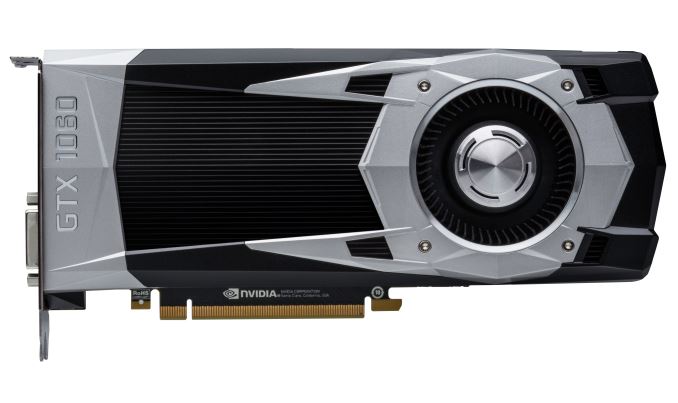
Excitingly, GPU Season 2016 is now in full swing. In the last two months we have seen NVIDIA launch a pair of high-end cards – the Pascal-based GeForce GTX 1080 and GTX 1070 – and just last week rival AMD launched their first card based on their Polaris architecture, the mainstream-focused Radeon RX 480. Powered by TSMC’s 16nm FinFET process and GlobalFoundries’ 14nm FinFET process respectively, NVIDIA and AMD have delivered better performance for lower prices, and with lower power consumption as well.
Of course no GPU product stack is complete with just a single chip and a handful of cards, and over the coming months we are going to see both vendors rolling out the rest of their respective stacks. To that end, kicking off this second wave of updates today is NVIDIA, who in traditional top-to-bottom fashion is announcing the next card in their product stack, GeForce GTX 1060. Powered by the company’s new GP106 GPU, GTX 1060 will be NVIDIA’s play at the mainstream/enthusiast market.
| NVIDIA GPU Specification Comparison | ||||||
| GTX 1080 | GTX 1070 | GTX 1060 | GTX 960 | |||
| CUDA Cores | 2560 | 1920 | 1280 | 1024 | ||
| Texture Units | 160 | 120 | 80 | 64 | ||
| ROPs | 64 | 64 | 48? | 32 | ||
| Core Clock | 1607MHz | 1506MHz | ? | 1126MHz | ||
| Boost Clock | 1733MHz | 1683MHz | 1700MHz | 1178MHz | ||
| TFLOPs (FMA) | 8.9 TFLOPs | 6.5 TFLOPs | 4.4 TFLOPs | 2.4 TFLOPs | ||
| Memory Clock | 10Gbps GDDR5X | 8Gbps GDDR5 | 8Gbps GDDR5 | 7Gbps GDDR5 | ||
| Memory Bus Width | 256-bit | 256-bit | 192-bit | 128-bit | ||
| VRAM | 8GB | 8GB | 6GB | 2GB | ||
| FP64 | 1/32 | 1/32 | 1/32? | 1/32 | ||
| TDP | 180W | 150W | 120W | 120W | ||
| GPU | GP104 | GP104 | GP106 | GM204 | ||
| Transistor Count | 7.2B | 7.2B | ? | 2.94B | ||
| Manufacturing Process | TSMC 16nm | TSMC 16nm | TSMC 16nm | TSMC 28nm | ||
| Launch Date | 05/27/2016 | 06/10/2016 | 07/19/2016 | 01/22/2015 | ||
| Launch Price | MSRP: $599 Founders $699 |
MSRP: $379 Founders $449 |
MSRP: $249 Founders $299 |
$199 | ||
When it came to building the Maxwell 2 generation, NVIDIA designed GM206 as half of a GM204; half of the CUDA Cores, half of the ROPs, half of the memory bandwidth, etc. It allowed for a very straightforward progression from the bottom of the Maxwell 2 family to the top of it, maintaining the same resource balance between all of the GPUs. For the Pascal generation in turn, NVIDIA has done much the same here.
Diving into the specifications then, GTX 1060 and its GP106 GPU ships with 1280 CUDA cores, which is half the number found on GTX 1080/GP104. Similarly, this means we’re looking at half the texture units, and half of the polymorph geometry engines. At this point NVIDIA has not provided an architecture diagram for GP106, so I don’t know how NVIDIA has laid out the internal working of the card, but we’ll be looking at 10 Pascal SMs in some configuration.
However on the backend of the rendering pipeline, things are a bit more interesting NVIDIA deviates a bit from tradition, and a bit from making GP106 a true halving of GP104. Whereas you’d expect half of a GP104 to ship with a 128-bit memory bus, NVIDIA has defied expectations by giving GP106 a larger 192-bit memory bus, giving the chip 50% more memory bandwidth per CUDA core, all things held equal. NVIDIA’s no stranger to 192-bit memory buses – in fact GK106 had one – but after Maxwell, this comes as a bit of a surprise.
As this is only a brief introduction on NVIDIA’s part – little more than a teaser – I’m sure we’ll find out more about their architectural decisions in time for the full review, but I suspect that the larger bus is a compromise solution for coming up with more memory bandwidth versus GTX 960/GM206. Relative to their Maxwell predecessors, all of the other Pascal parts so far have received significant bandwidth increases in order to feed their faster GPUs. For GTX 1080 this was GDDR5X, and for GTX 1070 this was faster 8 Gbps GDDR5 combined with a unified 256-bit memory bus. For GP106 to follow this path, NVIDIA would need to either implement GDDR5X (a more costly and volume-limited technology at this time), or go with a wider memory bus, and the company has seemingly opted for the latter.
| NVIDIA Compute To Memory Bandwidth Ratios | |||||
| Video Card | FLOPs-per-byte | Total Memory Bandwidth | |||
| GTX 1080 | 25.8 | 320GB/sec | |||
| GTX 1070 | 23.5 | 256GB/sec | |||
| GTX 1060 | 21.1 | 192GB/sec | |||
| GTX 960 | 20 | 112GB/sec | |||
| GTX 660 | 12.8 | 144GB/sec | |||
In any case, the 192-bit memory bus also means that we may see an increase in the number of ROPs on the card. NVIDIA has not disclosed the ROP count, but Pascal’s internal ROP/L2/memory controller partition design means that we’re going to be looking at 6 partitions, which at 8 ROPs per would work out to 48 ROPs. If this is the case, then not only would GTX 1060 be receiving a significant boost in memory bandwidth versus its predecessor, but it would be receiving a significant increase in raw pixel throughput as well. So it will be interesting to see what the final specifications turn out to be. Note that this could also impact the raster engine count – to maintain perfect balance, Pascal needs a raster engine for every 16 ROPs – but at this point that’s a bit more conjectural.
Moving on to clockspeeds, the GTX 1060 will be shipping with a 1.7GHz boost clock, which is smack-dab in the middle of the boost clocks for the GTX 1080 and GTX 1070. In other words, the card will be clocked just as high as its higher-end siblings, and the only difference will be the overall number of processing units within the GPU. On a pure SM basis this puts GTX 1060 at 4.35 TFLOPs, giving the card 67% of the compute and geometry performance of the GTX 1070. Or to compare it to the outgoing GTX 960, we’re looking at an 80% increase in those same metrics.
Backing the GP106 GPU is the aforementioned GDDR5 memory. Owing to its non-power-of-two memory bus size, GTX 1060 will be shipping with 6GB of VRAM, which is 2GB less than the GP104 cards and 2-4GB more than the older GTX 960. The card will use the same 8Gbps memory as on GTX 1070, giving the card 192GB/sec of total memory bandwidth, a hefty 71% increase over GTX 960. Combined with the increased memory compression efficiency of Pascal, it goes without saying that GTX 1060 should not find itself wanting for memory bandwidth.
Rounding out the package, let’s talk about power and thermals. NVIDIA is slotting GTX 1060 in the same TDP envelope as the outgoing GTX 960, which means 120W, making the GTX 1060 their flagship sub-150W card. We’ll of course see just how well they adhere to that in our full review, but the basic idea is that GTX 1060 should be a drop-in replacement for GTX 960, an important consideration for the sub-150W market that the card is aimed at.
In terms of performance, NVIDIA hasn’t published any internal benchmarks, but they have been rather explicit that they’re targeting GTX 980 performance. Given what we’ve seen of Pascal so far, there’s good reason to believe that a 1280 CUDA core GPU should be able to come close, though it’s going to depend on the game. My best guess is that baring more extensive power throttling, GTX 1060 should be able to come close, though less so in games that are very shader/texture heavy. In any case, coupled with NVIDIA’s 120W TDP power target, what we’re looking at is another aggressive move by NVIDIA with regards to power efficiency, bringing GTX 980 performance down from 165W to 120W.
For the July 19th launch, much like their higher end cards NVIDIA is going to be launching with two designs and two price points. Officially the GTX 1060 starts at $249; this will be for partner custom cards, and I expect this will be for the usual single/dual fan open air cooler designs that we saw with the GTX 960. Meanwhile at $299 NVIDIA is launching a Founders Edition card, which implements a full blower.
However this is where the similarities end. Unlike the GTX 1080/1070 launch, the 19th is a hard launch for both the GTX 1060FE and for partner custom cards, and NVIDIA is expecting the bulk of the cards sold to be these custom cards. In this sense the GTX 1060 launch is more akin to the GTX 960 launch, as NVIDIA has more often than not opted to pass on producing reference cards for their mainstream cards.
In fact NVIDIA’s partners won’t even be selling the GTX 1060FE; the card will only be available through NVIDIA’s website. NVIDIA is calling the GTX 1060FE a “special limited edition” card, and though the company isn’t commenting on the matter, I strongly suspect that the GTX 1060FE is a limited run that NVIDIA will only be selling for a couple of months or so. NVIDIA has done similar things in the past, though ultimately when they curtail production is entirely up to them. I do wonder how NVIDIA’s partners feel about the company competing with them in the etail market, but with NVIDIA charging a significant $50/20% price premium, the partners have a lot of room to play with and improve on the NVIDIA reference design.
In terms of design, the GTX 1060 Founders Edition unsparingly ends up being a slightly smaller version of the common design shared by the GTX 1080 and GTX 1070 Founders Edition cards. The full care measures 9.75-inches long, 0.75-inches shorter than the GTX 1080/1070. Of that, only 6.75-inches is the actual reference PCB, with the final 3-inches housing the sole 6-pin power connector, the rest of the heatsink, and the radial blower fan. Given the size of the PCB, I wouldn’t be surprised to see some fairly small semi-custom cards come out of the partners, pairing up the PCB with smaller coolers. Meanwhile the display I/O configuration is identical to the other Pascal cards at 3 DP 1.4 ports, 1 HDMI 2.0b port, and 1 DL-DVI-D port. Also, the SLI connector is absent from this board.
Finally, looking at the larger competitive and pricing landscape, the GTX 1060 is consistently priced with NVIDIA’s other Pascal cards, which is to say higher than the 900 series. Overall, GTX 1000 series pricing is closer to that of the 700 series, with the GTX 1060 launching at the same $249 price point the GTX 760 launched at back in 2013. As a result NVIDIA is going to miss the $199 mainstream sweet spot that the GTX 960 launched at, at least for the time being.
Whether that’s a blessing or not for AMD however remains to be seen. Overall GTX 1060 is clearly a shot across the bow at AMD’s recently launched Radeon RX 480, not quite overlapping it in price but otherwise going after the same target market with very aggressive performance and power targets. For various reasons 4GB RX 480 cards are in extremely short supply, and if this is still the case in 2 weeks, then the practical competition would be the $239 RX 480 versus the $249 GTX 1060 until AMD’s partners further ramp up the 4GB cards. Even then, I don’t know if things are cut and dry for the 4GB card given its more limited memory capacity.
Speaking of short supply though, it remains to be seen whether NVIDIA can keep the GTX 1060 in supply over the next couple of months. Certainly the first batches of cards will sell out on the 19th, as this has happened with previous launches. But what’s in question is whether NVIDIA and their partners can keep them in supply with the batches after that. So far NVIDIA has not been able to keep the GTX 1080 and GTX 1070 in supply – at the time of this writing, Newegg has a single card in stock – and the launch of the GTX 1060 won’t help that.
In practice NVIDIA has been receiving/processing GP106 for months, so the formal launch of GTX 1060 doesn’t change anything, but it none the less hints that NVIDIA is struggling at some point in their supply chain to meet demand. Officially the company has stated that they expect broad availability for the card and that they are ramping up supply “really fast,” but it’s definitely a case of where we’re going to have to wait and see. Ultimately buyers after the GTX 1060 may be better served snagging it on launch day, where the greatest number of units are available at once.


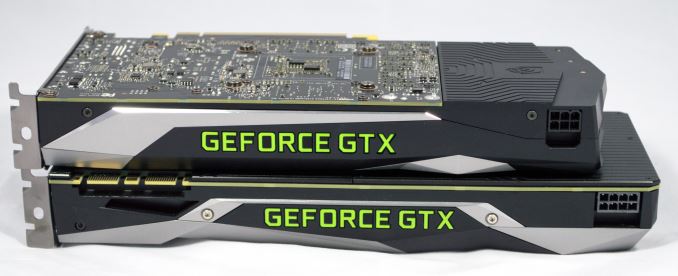
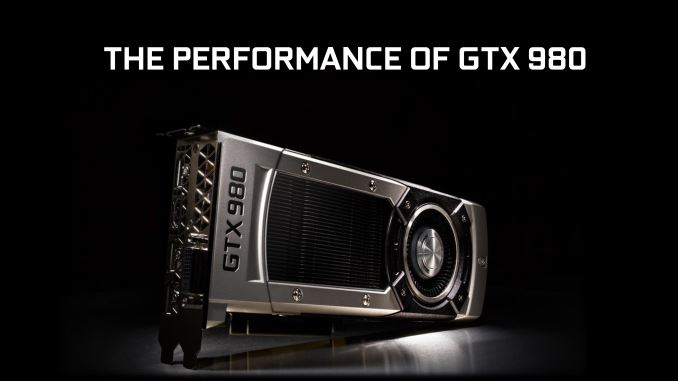
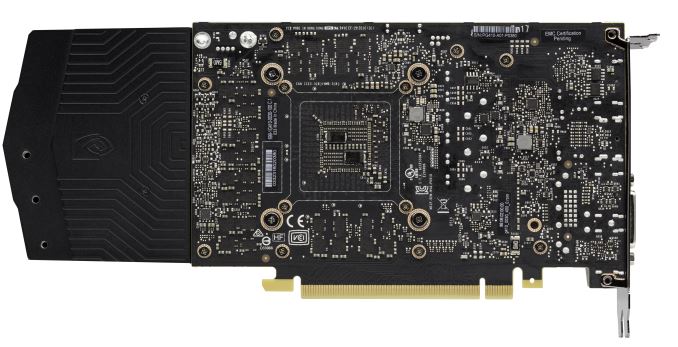
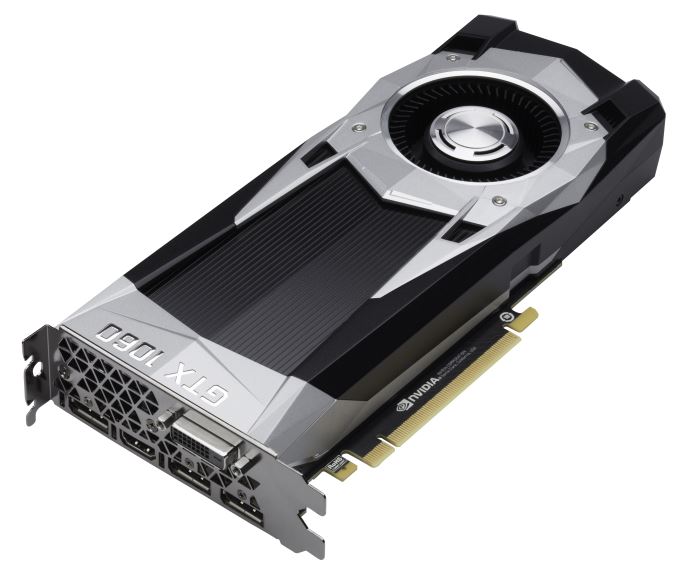














228 Comments
View All Comments
eddman - Thursday, July 7, 2016 - link
The higher prices probably have to do with 1080/1070's high demand and low supply. A while later they will definitely arrive at their MSRP. This has happened in the past too.I don't care if there has been cases of damage or not. I'm not buying non-standard cards. I'd only consider a 480 with two 6-pin connectors, or a single 8-pin.
Of course it's physics. I know how hot my room can or cannot get. Even a single extra 60 watt lamp is enough to make it hotter than it should be for me, let alone "a couple", which might end up to be the difference between the 1060 and 480. I don't want a card that consumes more for the same performance. Period.
The point is that there are people who care about such stuff, which you dismissed.
eddman - Thursday, July 7, 2016 - link
*No editing function.Custom 1060s are supposed to launch at the same time. They would probably still cost more than $250 but that would change in time.
DrKlahn - Thursday, July 7, 2016 - link
I didn't dismiss it. Just looking at the most common situation in which a ~40w difference is not likely to make any meaningful difference. Yours is not a common situation. There will always be outliers.Fine grab one of the upcoming 480 AIB's with an 8pin if you are worried. There's no evidence to suggest you would have any issues, but there are certainly products that will put you at ease. AMD is supposed to release a driver today to reallocate power routing to alleviate the concerns from the tech press. Their solution may also put you at ease with a reference card. Although I suspect you will buy a 1060 regardless.
Yes as yields improve and supply increases I expect all Pascal cards to finally see price drops. But the immediate situation for the 1060 is likely to follow the 1070/1080. If it does the cheapest AIBs will likely be around $280 and I don't really expect them to go much less than $299.
In the next few months I'm guessing the low supply issue with 1080 and 1070 will in all likelihood greatly impact the 1060. Nvidia has a contact with TSMC for X amount of wafers (they are not their only customers). As long as they are unable to meet demand for their high margin parts, they are not likely to allocate much to lower margin parts. That's simply business. The only other possibility is that the 1060 is a cut down 1070 and not its own die (which is rumored). That would give Nvidia a salvage part situation which would help short term availability, but be very bad for the long term affordability of the part (bad margin).
I think the 1060 will be a good performing part. I think it will have limited availability for at least a few months. I think its main intent is to keep the faithful from jumping to the 480 even though it's likely to cost more and there will be a wait to get it. If it's performance is meaningfully better, Nvidia will probably be successful in swaying a lot of folks away from the 480.
eddman - Thursday, July 7, 2016 - link
I agree with most of that, except this:"I think its main intent is to keep the faithful from jumping to the 480"
If someone does not buy a 480 now, he/she is an nvidia faithful? A smart consumer would wait for the competition in order to have a better view of the products before making a decision.
Yes, I might end up buying a 1060 in the end, but if pascal proves to be inherently deficient in DX12 titles going forward, I might go with 480, even though I don't like power inefficient cards. I don't care about VR at this point, so that's one thing off the 1060's pro list.
Also, 480 seems to be in short supply too, so it's not like I can buy one now at the suggested $240 price anyway. AMD is more or less in the same situation.
eddman - Thursday, July 7, 2016 - link
*a custom 480 that is, with a better cooler and an 8-pin or 2x6-pin connectors.DrKlahn - Thursday, July 7, 2016 - link
So you don't believe rushing this release, while releasing no meaningful figures, had anything to do with keeping people from going to their competitor? Nvidia has been paper launching or teasing specs for years to accomplish this exact goal. And to their credit, it does work. This is plainly an attempt to stop consumers from making a purchase and consider their product. I'm not saying that it isn't being a smart consumer to consider all angles. I'm saying there is a reason this was rushed and nebulous performance promises given. If the 1060 had kept to it's original release schedule there would certainly have been people on the fence grabbing a 480. This is obviously meant to combat that.Pascal in it's current form shows very little progress on handling Asynchronous tasks. In fact all evidence I see points to it being a mildly modified optical shrink of Maxwell. Which may or may not effect it in future titles. Nvidia has tremendous developer clout and will throw money to steer games to favor their architecture. So my gut tells me that asynchronous compute functions will be sidelined us much as they can be to hurt their competition and spotlight their products. For the consumer that will certainly stall progress and hurt the overall experience, but such is business. The red herring will be the consoles. If engines are ported between platforms and asynchronous compute can't be gutted easily Nvidia may be in a bad position. Time will tell.
As far as today's titles that use DX12, the 480 is producing some good figures that I don't expect to see the 1060 match. If you look at linear scaling based on shader counts vs the 1070 (it has 67% of the shader capacity of the 1070), that puts the 1060 well below the 480 in the majority of Guru3D's DX12 titles (RotTR being the only one it should win). Which doesn't account for the memory bandwidth decrease of the 1060 which should decrease how well it scales some. DX11 in the same review using the same guess it is slightly faster or tied vs the 480. Again I expect the low memory bandwidth to hurt scaling more than the figure I'm basing these guesses off of.
The 480 is an efficient card, it's simply not as efficient as it's competitor is likely to be (or Nvidia's currently released Pascal cards). That makes it inefficient by comparison, but a card that is approaching 390x/980 performance (and in some cases exceeding them) for ~150w is not inefficient. Nvidia will likely continue to have an edge going forward here, but again for folks with anything better than a decent 500w power supply and a normal room the differences aren't going to amount to anything tangible.
Also Tom's Germany has tested the 16.7.1 driver and found that it does mitigate the PCI-E power concerns. Performance due to optimizations appears to have gone up as well (though this is just one source so far).
eddman - Thursday, July 7, 2016 - link
Not saying that it wasn't nvidia's intention, it was, but IMO a lot of buyers would've still waited to see how 1060 would pan out, regardless. Not because they are all nvidia fans, but because some of them know better not to jump in immediately.That's why I'm waiting on more DX12 titles. The current DX12 games are mostly half-assed hack jobs. Pascal already performs better than Maxwell in DX12, so something IS different. Perhaps they've implemented a different method to tackle async in comparison with AMD. Need to wait a while longer I suppose.
Of course inefficiency is a relative thing. There is no other way to determine it, and 480 is inefficient for the performance that it provides. It's obvious.
Yes, I read the PCPerspective article. Good job on AMD's part to pull it off. If it was nvidia, they might've tried to bury the whole thing. It still doesn't fully stay within power standards. I would still go for an 8-pin or 2x6-pin variant.
DrKlahn - Thursday, July 7, 2016 - link
A lot less would have waited if the 1060 was still months away. This is a calculated move.Pascal performs better because it has more units and clockspeed to do the work. If you normalize the clock speed and the number of CUDA cores the scaling between it and Maxwell is very close. Yes there are small improvements even after normalization, but not anything that points to a major change. Don't get me wrong Pascal is fast at DX12, but it's a brute force approach.
If you're worried about power post fix I can only conclude you have an agenda. The likelihood of it causing problems before was minimal and it's a pretty much a non-issue at this point. I could see waiting for an 8 pin connector and a better cooler for headroom, but to do so because of the power "issue" is nonsense at this point.
No card exists in a vacuum and it is less efficient than its competitor. But again you would need a very specific case where a 120w card is going make any sort of tangible difference vs. a 150w one. For the vast majority it simply won't matter except maybe as a bragging point.
eddman - Thursday, July 7, 2016 - link
I have an agenda simply because I don't want a card that breaks the 150W standard power barrier?! Maybe it's not an issue but I don't want it. That's just me. I stick to standards. Extra power connectors are there for a reason. Everyone else is free to do as they wish.I don't know what you mean by normalization exactly. Hardwarecanucks' separate performance summary charts show pascal is quite better than Maxwell in DX12.
I don't know what method nvidia used, but it's there. How are you so sure it's just brute force? It could be the new preemption feature. Even if it's brute forcing, so what? It still does better than Maxwell. It isn't as fast as GCN in the DX12 titles that are out there so far, though.
ACE76 - Monday, July 11, 2016 - link
If standards are that important to you, you should probably just buy ready made PCs....just about every person that builds a custom PC, tweaks it for performance one way or the other....even doing something as minor as changing memory timings puts it out of standard..adding a little clock speed to your CPU or video card puts it out of standard...it's pointless to even care this much about "standards" unless there was a genuine worry...there was a very little worry before AMDs fix but now after the fix, there literally no worry....a $49 PSU could take that load on the 6 pin with no issue.